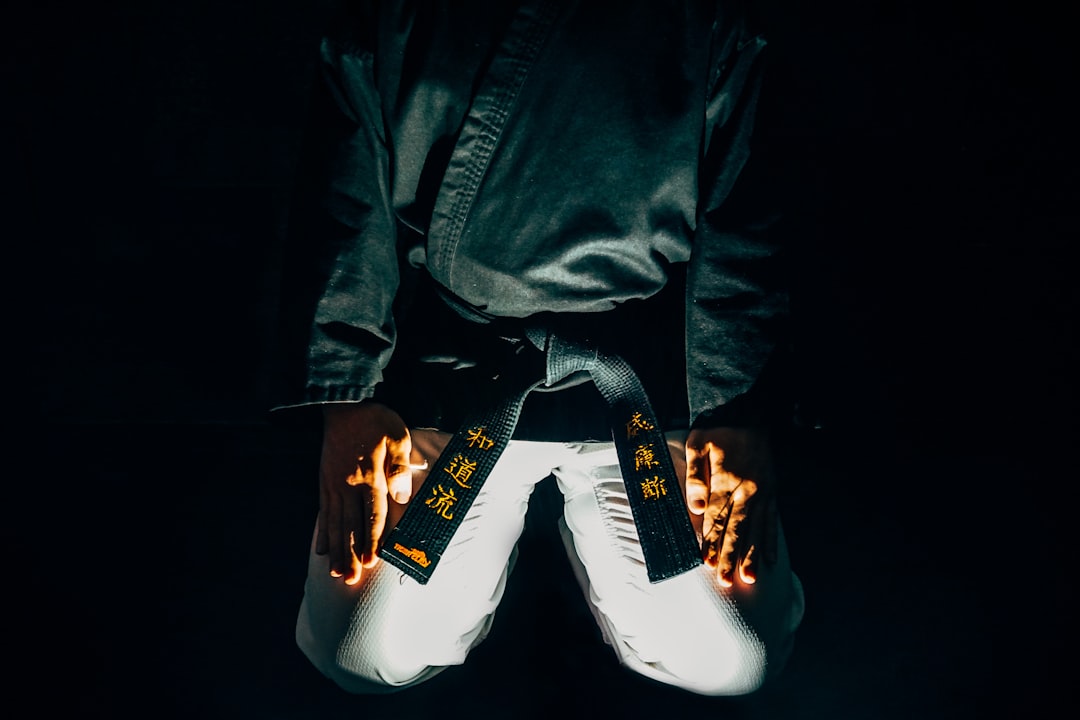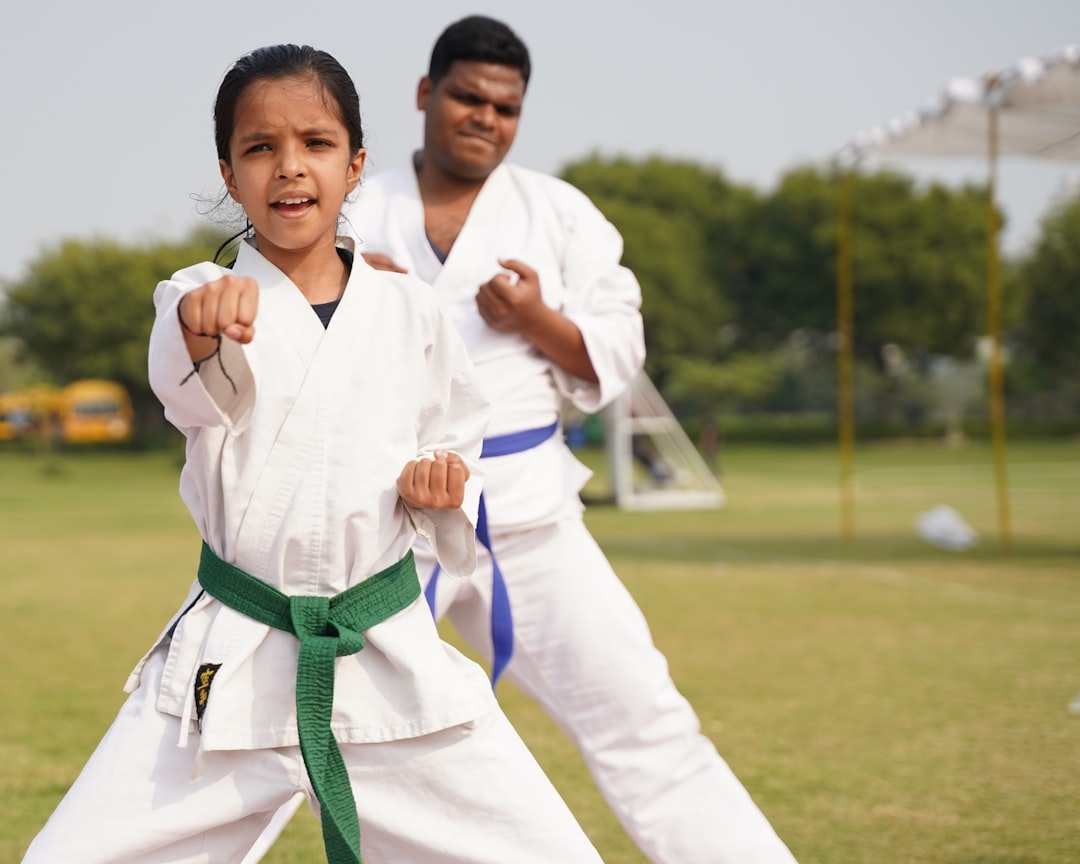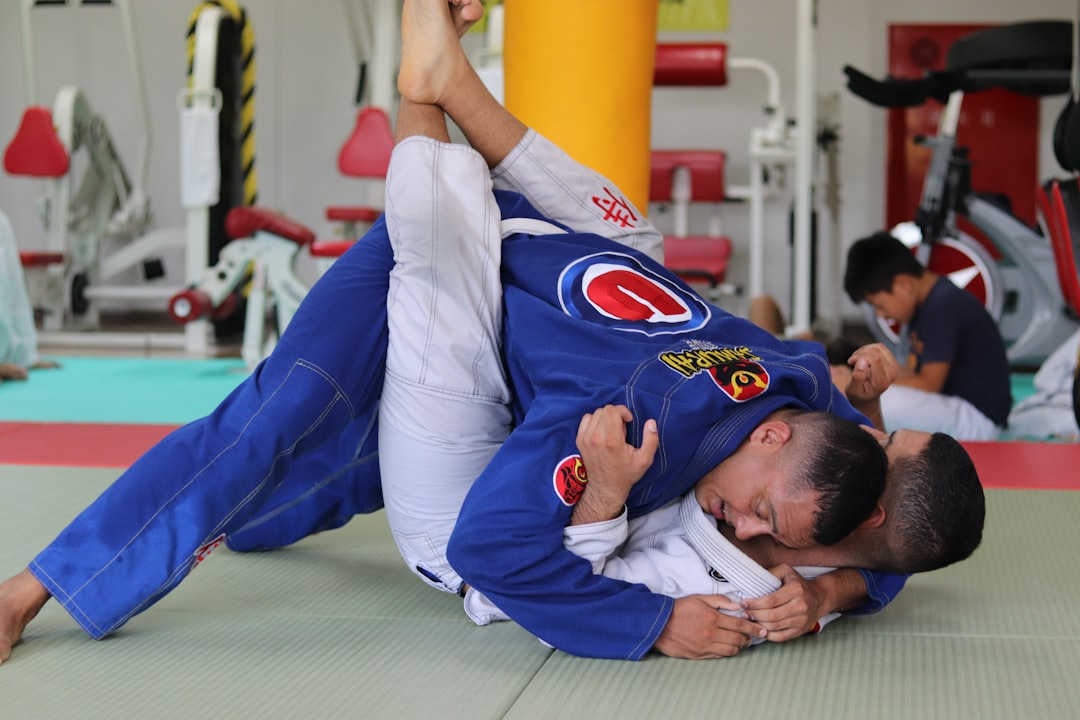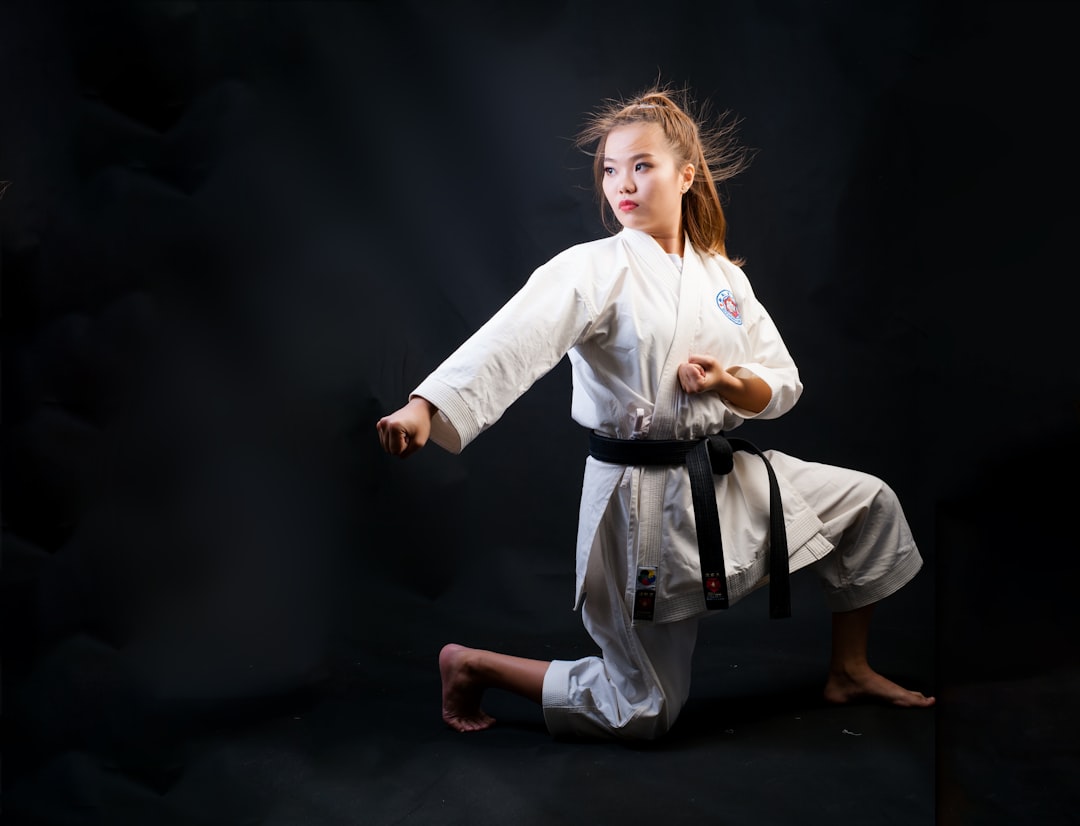The karate outfit, commonly known as a keikogi or gi, is an integral aspect of karate practice, embodying tradition and functionality. A traditional white gi with a colored belt system indicates the practitioner's rank and is worn across different styles of karate globally. While regional differences exist in design and materials, the gi remains the standard uniform for its optimal mobility and as a symbol of respect for the martial art. The keikogi's intentional cut allows for flexibility and serves as a blank canvas for the ranking system through colored belts. Karate gi also come in various colors beyond white, which may be permitted in certain schools, reflecting personal achievements and affiliations through patches. Modern gi have adapted to include protective features for sparring while maintaining the essence of traditional karate attire. In competitions overseen by organizations like the World Karate Federation, there are strict regulations on the color, fit, and design of the gi to ensure uniformity and fairness among participants. The karate outfit name is a testament to the martial art's evolution and its blend of historical practices with modern needs for performance enhancement.
Karate practitioners around the world are familiar with the discipline’s distinctive uniform, a garment steeped in tradition and functionality. Known colloquially as a “karate gi,” this outfit serves as both a practical training attire and a symbol of respect for the martial art’s heritage. In this article, we delve into the essential elements that define a karate gi, from its historical origins to its modern iterations. Explore the global variations and learn how to personalize your own gi to reflect your style and rank within the dojo. Whether you’re a beginner or a seasoned martial artist, understanding the significance of the karate outfit is key to embracing the full experience of this ancient and dynamic discipline.
- Understanding the Traditional Karate Outfit: The Gi
- The Evolution of the Karate Uniform: From Historical Roots to Modern Practice
- Key Characteristics of a Karate Gi: Fabric, Fit, and Functionality
- Customizing Your Karate Gi: Colors, Patches, and Personal Style
- Global Variations in Karate Outfits: Gis Across Different Styles and Schools
Understanding the Traditional Karate Outfit: The Gi

When engaging in the practice of karate, practitioners are adorned in a traditional garment known as a gi. The gi is the standard attire for karateka, or karate practitioners, and serves as both a uniform and a symbol of respect for the martial art. It consists of a jacket, trousers, and a belt, known as an obi, which denotes the wearer’s rank within the discipline. The top, or jacket, is buttoned up and often has either a plain weave or a twill design, offering a functional and traditional aesthetic. The trousers are straight-legged and hemmed to a length that allows for ease of movement during practice and performance. Karateka wear a white gi as the most universally recognized karate outfit name, although some styles may permit variations in color.
The design and cut of the gi facilitate mobility and provide a canvas for the expression of rank through the belt system. The question often arises, “What is the correct term for a karate uniform?” The answer is that it is commonly referred to as a gi. Additionally, while the gi’s basic elements remain consistent across different styles of karate, there can be subtle differences in fit, design, and materials, which may vary by manufacturer or according to regional preferences. These variations, however, do not alter the fundamental nature of the gi as the quintessential karate outfit name, embodying the discipline’s tradition and respect for its practice.
The Evolution of the Karate Uniform: From Historical Roots to Modern Practice

Karate, as a martial art, has a rich history that dates back centuries, and its uniform, known as a “keikogi,” has evolved significantly over time. Initially, practitioners wore simple clothing that allowed for ease of movement during practice. However, as the practice of karate became more formalized, the need for a standardized uniform emerged to ensure consistency across different schools and regions. The traditional keikogi consists of a jacket, pants, and belt, each with specific meanings and purposes. The jacket, or “gi,” typically features a loose fit, with long sleeves and a closed collar, designed to offer a range of motion while providing protection for the wearer’s skin during sparring. The pants are straight-legged, extending to the ankles where they are often secured with buttons and ties. Over time, the design of the keikogi has been standardized internationally, with specific color codes for the belts denoting different levels of skill and proficiency within the art. Today, when you step onto a karate mat, your attire is not just a uniform but a symbol of discipline, respect, and adherence to the traditions and principles of this ancient martial art. What began as modest and practical garments has become an emblem of the dedication and practice of karate around the world.
The modern keikogi, while retaining its traditional roots, has also incorporated elements from judo and kendo uniforms, reflecting the shared heritage of these Japanese martial arts. The international governing bodies of karate, such as the World Karate Federation, have further standardized the design and requirements for competition, ensuring that athletes across different countries and styles adhere to a common set of guidelines. This standardization has not only facilitated a sense of unity among practitioners but also enhanced the visibility and accessibility of karate as a sport. The karate outfit name, “keikogi,” thus serves as a testament to both the historical origins and the adaptive nature of karate, making it a recognizable element in modern martial arts practice. Are the designs of keikogis consistent across different countries, or do they vary? The designs are largely consistent internationally, with some variations in color and detail that may reflect national pride or school affiliation. However, the core elements of the uniform remain uniform to ensure that all practitioners can train together without distraction from differing attire.
Key Characteristics of a Karate Gi: Fabric, Fit, and Functionality

When practicing the discipline of karate, the choice of attire is significant as it adheres to traditional practices and supports the practitioner’s movements. A karate outfit, commonly referred to as a “Karate Gi,” is not merely a uniform but a symbol of respect for the art form. The key characteristics of a Karate Gi are deeply rooted in functionality, fit, and fabric.
The fabric of a Karate Gi is typically a tightly woven cotton or a blend that includes polyester for durability and ease of care. This material selection ensures both breathability and resilience, allowing practitioners to maintain comfort and focus during rigorous training sessions. Is the fabric lightweight and durable enough for continuous use in practice? Indeed, a well-crafted Gi is made from a fabric that strikes an optimal balance between lightness and robustness. The fit of a Karate Gi is designed to be snug yet not restrictive, enabling full range of motion for various techniques and stances. Does the Gi accommodate a wide spectrum of movements without hindering the practitioner? It certainly does, as the design prioritizes ease of movement while maintaining a formal appearance that is both modest and functional. The functionality of a Karate Gi extends beyond its fabric and fit; it also encompasses the garment’s ability to withstand repeated use and maintain its integrity over time. Are Karate Gis versatile enough for regular use in various conditions? They are, as they are engineered to remain both functional and presentable after many washes and wears.
Customizing Your Karate Gi: Colors, Patches, and Personal Style

When stepping onto the mat for a karate practice or competition, the attire you wear not only signifies your commitment to the martial art but also showcases your personal style and rank. The traditional karate outfit, commonly known as a gi, serves as a canvas for customization. Choosing the right color for your gi can be significant; white is the classic choice, symbolizing purity and humility, while black gis are often reserved for higher belts or instructors, representing skill and maturity. Additionally, incorporating patches into your gi can add a personal touch and reflect your achievements or affiliations with different dojos or karate organizations. These patches, typically placed on the sleeves and chest, can narrate a story of your journey through karate, highlighting your dedication to the discipline and your milestones within it. Is it important to consider the significance of color when selecting a gi? Absolutely, as the color can convey different aspects of your training and progress. Do patches hold any special meaning in karate? Yes, they often represent a karateka’s accomplishments and affiliations, adding both a personal and historical dimension to their gi.
Global Variations in Karate Outfits: Gis Across Different Styles and Schools

When practicing karate, the choice of attire reflects tradition as well as functionality. The traditional karate outfit, commonly known as a “gi,” is a simple and practical garment that allows for ease of movement and comfort during practice or competition. Gis are not uniform across all styles and schools of karate; variations exist that cater to the specific needs of different martial arts systems. For instance, Shotokan practitioners typically wear a white gi with a belt indicating their rank. In contrast, Shorin-ryu Karate practitioners may don a gi that is slightly heavier and more robust to accommodate the unique techniques inherent to this style. Another aspect to consider is the length of the trousers; while some styles require pants that reach just above the ankle, others might prefer full-length trousers. The top component of the gi, known as a “keikogi,” also varies in terms of collar design and fit, with some schools favoring a more form-fitting torso to allow for a full range of motion during techniques like punches and kicks.
The global variations in karate outfits extend beyond the traditional gi to include modern training attire designed to enhance performance and protection. Karateka engaged in sparring might opt for specially tailored uniforms that offer more flexibility or incorporates protective padding in key areas such as the chest, back, and forearms. These modern adaptations of the karate outfit are not only functional but also represent a blend of tradition and innovation, reflecting the evolving nature of martake as a discipline. Do the different gis affect the performance of karate techniques? They can indeed influence an individual’s mobility and comfort, which in turn may impact their technique execution and overall training experience. Are there any specific requirements for gis in competitive karate events? Yes, organizations that govern karate competitions often have strict regulations regarding the color, fit, and design of the gi to ensure fairness and standardization among competitors.
In conclusion, the karate outfit, commonly known as a gi, is steeped in tradition and has evolved significantly over time. From its historical origins to its modern-day iterations, the gi serves as both a symbol of discipline and a functional garment for practitioners around the world. Its key characteristics—distinctive fabric, tailored fit, and enhanced functionality—are not only integral to the practice of karate but also allow for personal expression through colors and patches that reflect an individual’s rank, school, or personal style. As karate continues to be practiced and appreciated globally, the variations in karate outfits across different styles and schools further enrich the martial art’s cultural tapestry. Understanding the karate outfit name and its significance adds a layer of depth to one’s appreciation for this dynamic discipline, making it clear that the gi is more than just an attire—it is a pivotal component of the martial arts journey.
